Title : Implementation of opt-out human immunodeficiency virus screening in pediatric emergency departments
Abstract:
The Centers for Disease Control and Prevention recommends HIV screening for all patients ≥13 years. Parts of Metro Atlanta have HIV positive rates at 8-times the national average. Adolescents are the least likely group to know their HIV status and have the lowest rate of linkage to care and viral suppression. Children’s Healthcare of Atlanta (Children’s) implemented an opt-out HIV testing program in its emergency departments (ED) for patients ≥13 years undergoing venipuncture for any chief complaint at 2 of their 3 sites. The objective is to increase testing in adolescents leading to earlier HIV diagnosis and linkage to care.
Children’s electronic medical record EPIC and its population discovery tool were used to compare HIV testing volumes of 13–24-year-olds, 8 months pre-(November 5–July 5, 2023) and 8 months post (July 6–March 6, 2024) clinical implementation. Data for all 3 sites was reviewed and all sites received educational promotion. Results were cross-referenced to determine newly diagnosed adolescents living with HIV (ALHIV) from known positives. The data was compared using descriptive statistics.
A total of 966 patients were tested pre-implementation, 697(72%) girls and 269(28%) boys. Six new ALHIV were identified, 1 male coinfected with syphilis, the average age was 17 and the assignment at birth was (3) male and (3) female. After 8 months of implementation, a total of 1600 patients were tested: 1101(69%) girls and 499(31%) boys. Six new ALHIV were identified; the average age was 16 and the assignment at birth was (5) male, 2 coinfected with syphilis, and (1) female. This demonstrates an overall positivity rate of 0.4% and 1 in 100 boys tested positive (1%). At sites receiving education for 1 week, 5 and 8 months, testing increased by 8%, 72% and 88% respectively. All newly diagnosed cases were linked to care within 1-48 days.
Atlanta remains a hotspot for new HIV cases. Six cases in 8 months highlights the importance of universal HIV testing of adolescents and reflects a public health crisis. The new initiative significantly increased HIV screening among adolescents and will likely identify ALHIV at an earlier stage of infection, facilitating timely access to medical care. This can lead to improved clinical and immunological outcomes and a reduced risk of secondary transmission.



